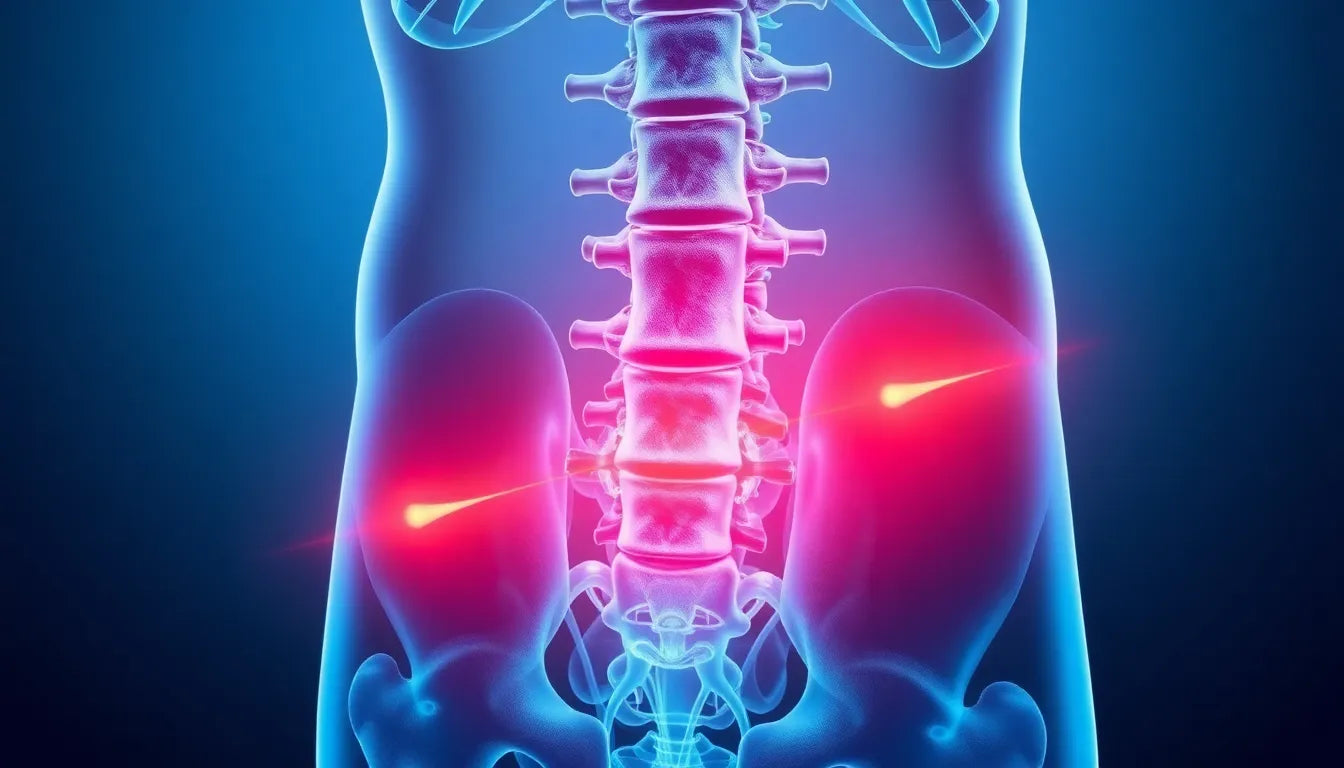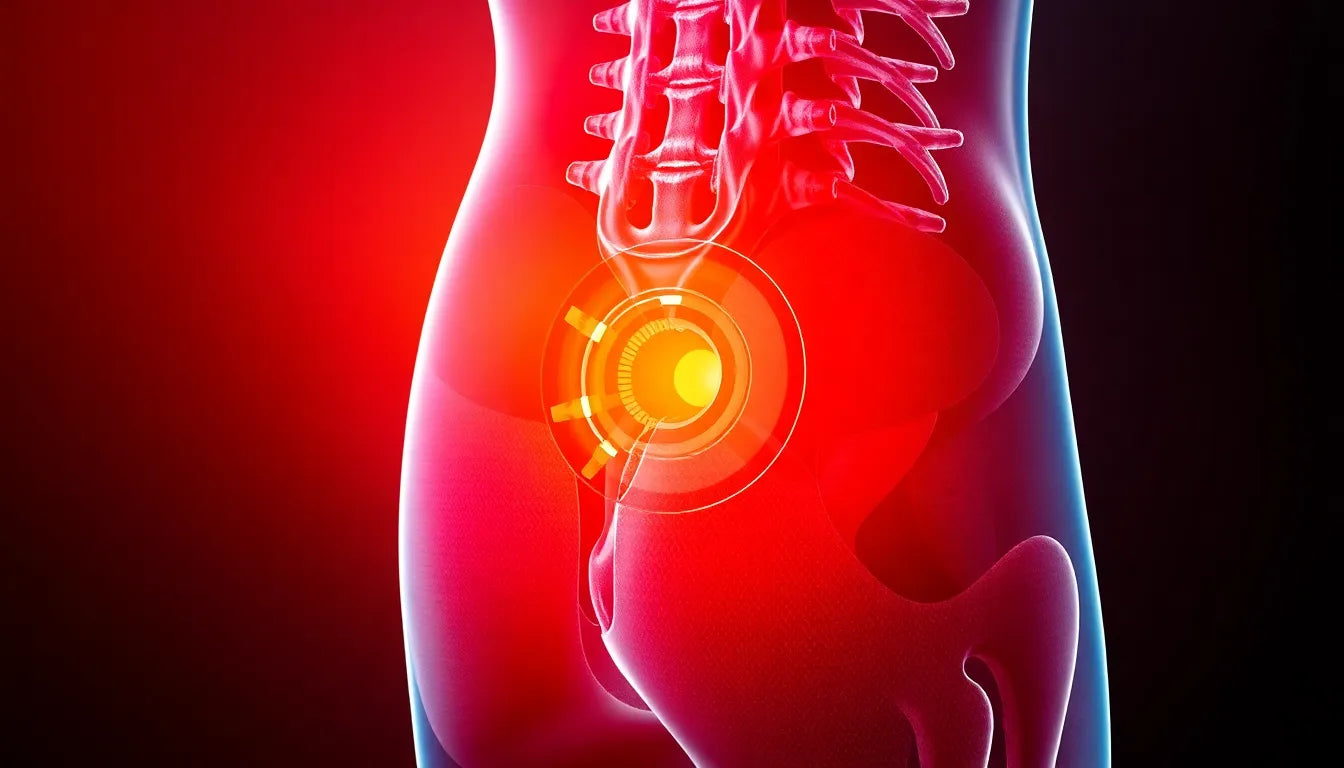Back pain is an all-too-common ailment that affects millions of people worldwide. While it might seem like a minor inconvenience, persistent back pain can sometimes be a sign of a more serious underlying issue, such as a herniated disc. Recognizing the signs of a herniated disc is crucial for timely intervention and effective treatment.
Understanding herniated discs
A herniated disc occurs when the soft, jelly-like center of a spinal disc pushes through a tear in the tougher exterior. This displacement can press on nearby spinal nerves, leading to pain and discomfort. Herniated discs are particularly prevalent among adults, especially those who engage in repetitive lifting, have sedentary lifestyles, or are involved in occupations that put strain on the back. The condition is not only common but can also significantly impact one's quality of life if left unaddressed.
The purpose of this post
In this blog post, we aim to educate readers on how to recognize the symptoms of a herniated disc and understand the diagnostic process. By shedding light on the telltale signs and symptoms, we hope to empower individuals to seek appropriate medical advice and take proactive steps towards managing their health. Whether you're experiencing back pain for the first time or have been dealing with it for a while, understanding the potential indicators of a herniated disc can be a vital step in your health journey.
Recognizing the common symptoms of a herniated disc
Identifying the symptoms of a herniated disc is crucial for early intervention and effective treatment. While back pain is a common symptom, it can manifest in various ways. Understanding these symptoms can help you determine whether your discomfort might be due to a herniated disc.
Low back pain
One of the most prevalent symptoms is low back pain, which can range from a dull ache to a sharp, stabbing sensation. This pain may be persistent or intermittent and can worsen with certain movements, such as bending or twisting. If you notice that your back pain does not improve with rest or over-the-counter pain relievers, it may be indicative of a herniated disc.
Sciatica
Sciatica is another hallmark symptom of a herniated disc, characterized by a sharp, shooting pain that radiates from the buttock down the back of one leg. This occurs when the herniated disc compresses the sciatic nerve, which runs from the lower back to the feet. Sciatica can significantly impact your daily activities, making it difficult to sit, stand, or walk for extended periods.
Numbness or tingling
Nerve compression from a herniated disc can also cause numbness or tingling in the affected leg or foot. These sensations often accompany sciatica and may be felt as a pins-and-needles sensation. If you experience persistent numbness or tingling, it is important to seek medical evaluation to prevent further nerve damage.
Weakness in leg and/or foot
Muscle weakness in the leg or foot is another symptom that may arise from a herniated disc. This weakness can affect your ability to lift the foot or maintain balance, increasing the risk of falls. If you notice any unexplained weakness, it is essential to consult a healthcare professional for a thorough assessment.
Rare but serious symptoms
In rare cases, a herniated disc can lead to more severe symptoms, such as loss of bladder or bowel control. This condition, known as cauda equina syndrome, requires immediate medical attention to prevent permanent damage. If you experience these symptoms, it is crucial to seek emergency care without delay.
Diagnostic methods for herniated discs
Diagnosing a herniated disc involves a combination of physical examinations and imaging tests. Understanding these diagnostic methods can help you prepare for a doctor's visit and ensure you receive an accurate diagnosis.
Physical examination
During a physical examination, your doctor will assess your neurological function, including muscle strength, reflexes, and sensation. One common test is the straight leg raise test, where you lie flat while the doctor lifts your leg to check for pain that radiates down the leg. These assessments help determine the extent of nerve involvement and guide further testing.
Imaging tests
Imaging tests are often used to confirm a herniated disc diagnosis. Magnetic resonance imaging (MRI) scans are the most common, providing detailed images of the spinal discs and nerves. Computed tomography (CT) scans and myelograms may also be used to visualize the affected area. Each imaging technique has its advantages, and your doctor will recommend the most appropriate test based on your symptoms.
| Imaging Test | Purpose | Advantages |
|---|---|---|
| MRI | Detailed images of discs and nerves | Non-invasive, no radiation |
| CT Scan | Cross-sectional images of the spine | Quick, good for bone structures |
| Myelogram | Visualize spinal cord and nerves | Useful for diagnosing nerve compression |
Practical advice: When to see a doctor
Knowing when to seek medical advice is crucial in managing a herniated disc. If you experience persistent back pain, sciatica, or any of the symptoms mentioned above, it is advisable to consult a healthcare professional. Early diagnosis and treatment can prevent further complications and improve your quality of life.
At home, you can manage mild symptoms by avoiding activities that exacerbate pain, using ice or heat therapy, and engaging in gentle exercises to strengthen the back muscles. However, if symptoms persist or worsen, professional evaluation is necessary to explore more targeted treatment options.
Additional insights and preventive measures
Understanding the signs of a herniated disc is only part of the journey. Real-life examples can provide insight into how these symptoms manifest in daily life. Consider the story of John, an office worker who began experiencing a dull ache in his lower back. Initially dismissing it as a result of long hours at his desk, John soon noticed the pain radiating down his leg—a classic sign of sciatica. With timely medical intervention and lifestyle adjustments, John managed his condition effectively, highlighting the importance of early detection.
Visual aids can also enhance comprehension. Diagrams illustrating the anatomy of the spine and the impact of a herniated disc on nerve pathways can be invaluable. These visuals can help you better understand the condition and its effects on the body.
Preventive measures for herniated discs
Prevention is always better than cure, and there are several strategies you can employ to reduce the risk of developing a herniated disc. Maintaining a healthy weight is crucial, as excess weight can put additional strain on the spine. Regular exercise, focusing on strengthening the core muscles, can provide better support for the spine and improve flexibility.
Proper lifting techniques are also essential, especially if your job involves heavy lifting. Always lift with your legs rather than your back, and avoid twisting your body while lifting. Ergonomic adjustments to your workspace can also help, such as using a chair with proper lumbar support and ensuring your computer screen is at eye level to prevent strain.
Conclusion
Recognizing and diagnosing a herniated disc is vital for effective treatment and management. By understanding the symptoms and diagnostic methods, you can take proactive steps to address any issues promptly. Early detection and appropriate medical intervention can significantly improve outcomes and enhance your quality of life. Remember, if you experience persistent back pain or any symptoms associated with a herniated disc, consult a healthcare professional for a thorough evaluation.
Frequently Asked Questions
What causes a herniated disc?
A herniated disc can result from several factors, including aging, which causes the discs to lose flexibility and become more prone to tearing or rupturing. Other causes include injury from lifting heavy objects improperly and lifestyle factors such as prolonged sitting or repetitive motions.
Can a herniated disc heal on its own?
In some cases, a herniated disc can heal over time with conservative treatments like rest, physical therapy, and pain management. However, if symptoms persist or worsen, medical intervention may be necessary to prevent further complications.
What are the treatment options for a herniated disc?
Treatment options vary depending on the severity of the condition. Conservative treatments include physical therapy, medications, and epidural steroid injections. In severe cases, surgical options such as discectomy or spinal fusion may be considered.
How can I differentiate between a herniated disc and other back pain?
While general back pain is common, a herniated disc often presents with specific symptoms like sciatica, numbness, or weakness in the leg or foot. If you experience these symptoms, particularly if they are persistent, it is important to seek a professional evaluation to determine the underlying cause.


















